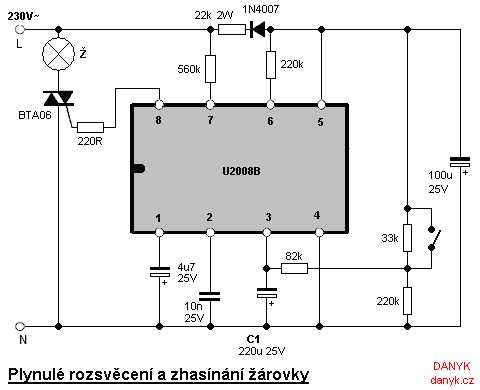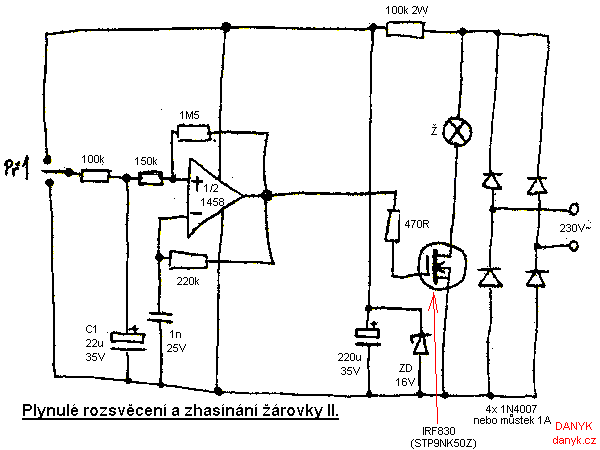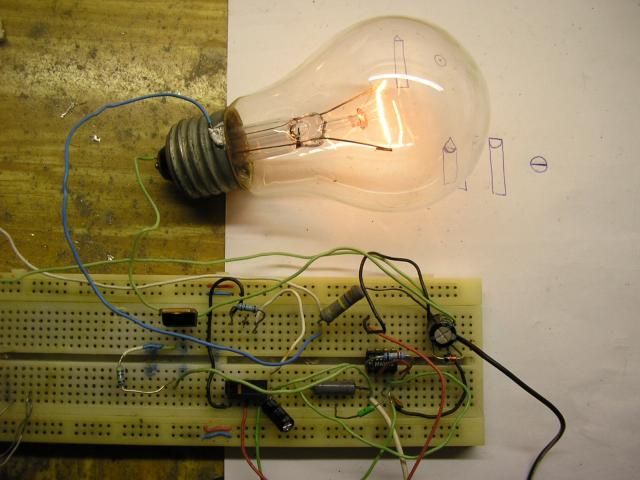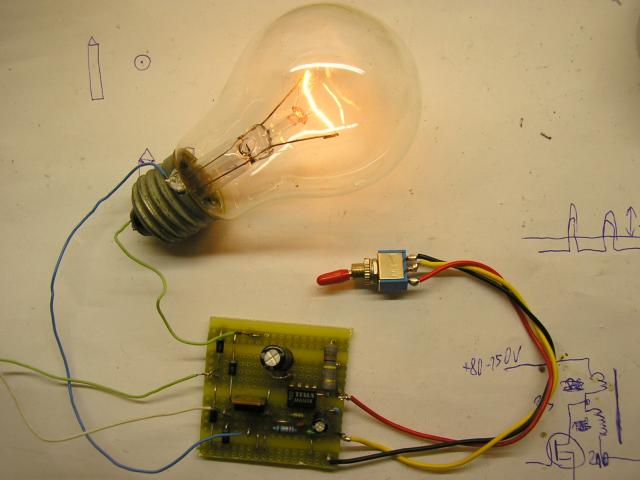
Light bulb soft switching
Switching light bulbs on and off slowly does
not only prolong its life, but it is especially pleasing to the eyes.
I tested just 2 versions of this device. A description of each of them you can find under the schematic.
Warning! The device is electrically connected to the mains.
The light bulb turned off just by this device, it must be treated as turned on. To replace the bulb
it is necessary to disconnect the circuit from the mains. You do everything on your own risk.

Schematic of circuit smoothly switching light bulbs on and off - version I. Regulation of the phase, using
triac. Control circuit is U2008B. After the switch is turned on the light bulb begins slowly light up, until it reaches full
brightness. After switching off the light fades gradually until it is completely off. Rise and fall time is directly proportional to the capacity of
C1. When the value is 220u the time is approx 7s. For bulb up to 200W triac needs no heat sink.

Schematic of circuit smoothly switching light bulbs on and off - version II. It has pulse-width modulation (PWM) with a frequency of about 2 kHz.
The switch is a MOSFET-N. Operational Amplifier is 1458 (or 4558). It
operates as an oscillator with a variable duty cycle. The
auxiliary voltage for the IC is obtained using the 100k 2W resistor.
After the switch is turned the light bulb begins slowly light up, until it reaches full
brightness. After turning the switch to opposite side, the bulb gradually fades out. The MOSFET without cooling can power up to 150W bulb.
The capacitor C1 determines the time of rise and fall, with 22u it is about 6s.

Testing version II.

Completed module - version II.
home



